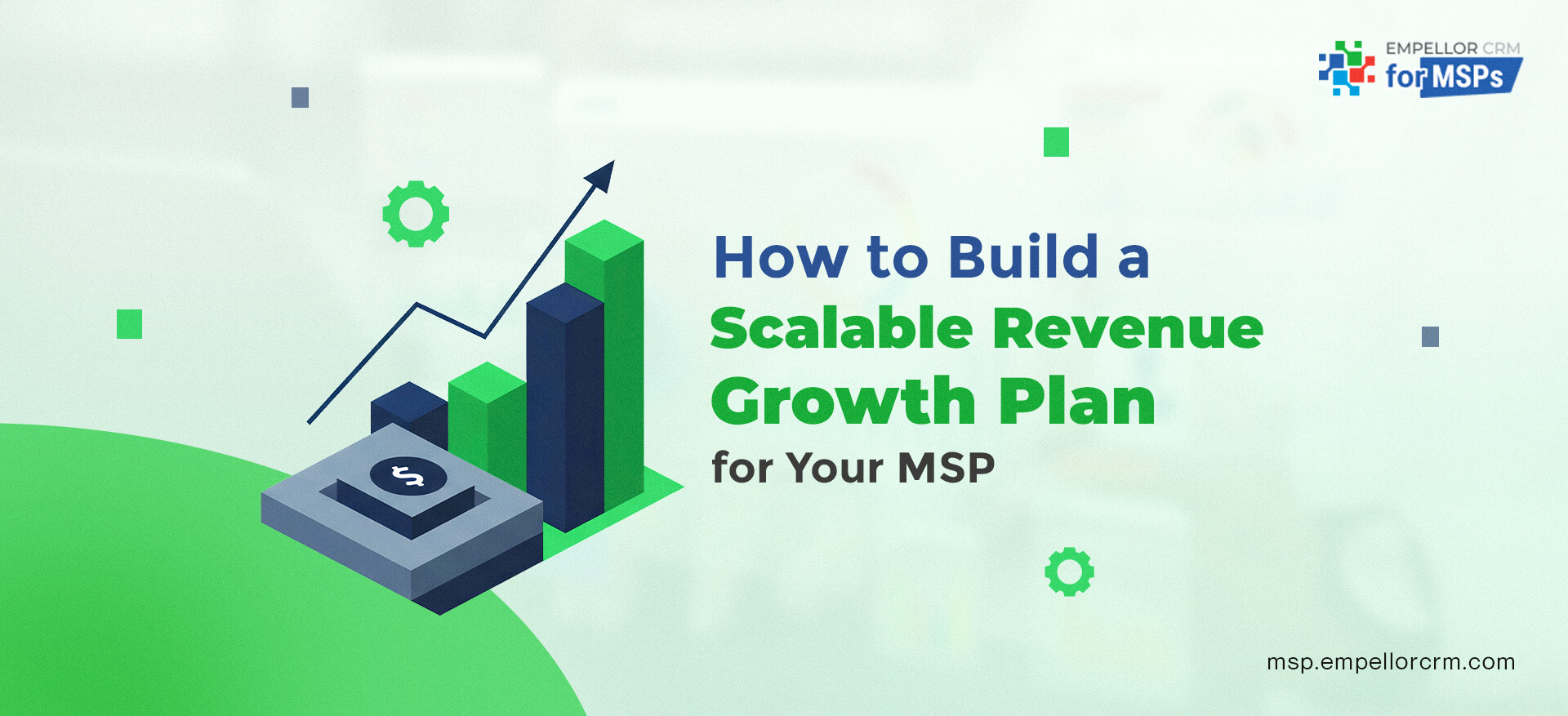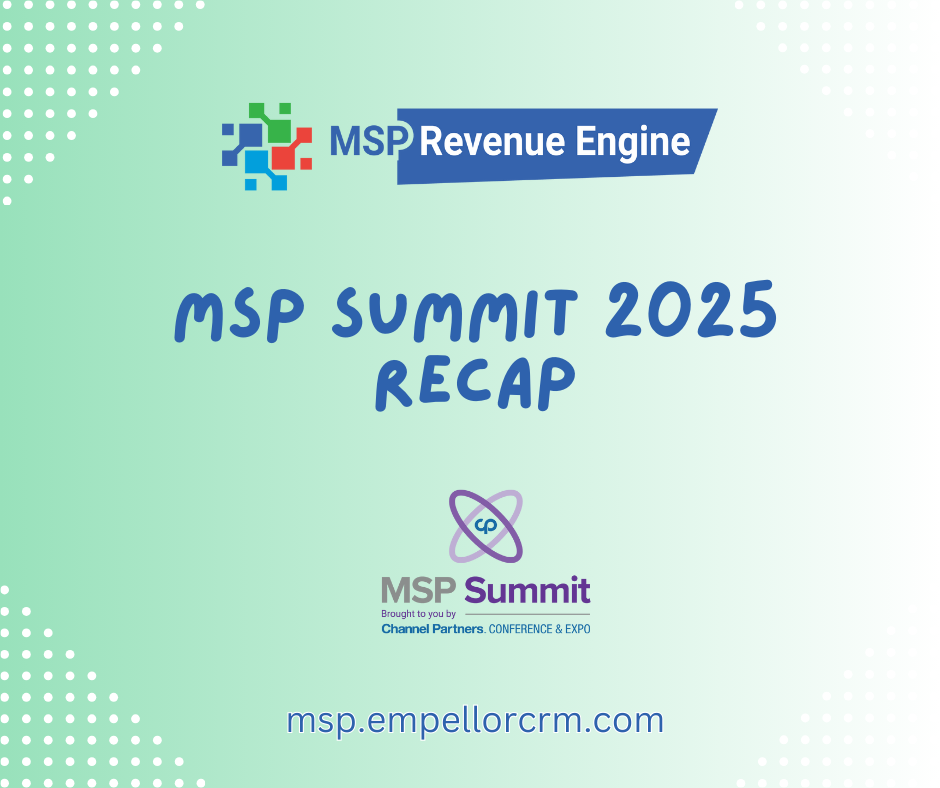The Managed Service Provider (MSP) industry is more competitive than ever. With increasing competition, shrinking margins, and evolving customer needs, scaling revenue growth is a constant challenge. Many MSPs struggle with an undefined growth strategy, inefficient sales pipelines, and a lack of recurring revenue optimization.
To achieve sustainable success, you need a scalable revenue growth plan that aligns with your business goals, leverages automation, and ensures profitability. In this blog, we will break down the essential steps MSPs must take to develop a growth strategy that not only sustains but accelerates revenue expansion.
Step 1: Define Your Growth Strategy
Align Growth Strategy with Business Goals
Your MSP growth strategy should be clearly defined and aligned with your overall business objectives. Ask yourself:
- What is your revenue target for the next 12-24 months?
- Are you focusing on new customer acquisition, expanding existing accounts, or both?
- Which services are the most profitable, and where do you see market demand?
Successful MSPs understand that recurring revenue growth is the backbone of their business. A well-defined MSP revenue lifecycle helps ensure that all sales and marketing efforts contribute to sustainable growth.
Identify Your Ideal Customer Profile (ICP)
Not all customers are created equal. To build a scalable revenue growth plan, you need to focus on acquiring and retaining the right type of clients. Consider factors such as:
- Industry verticals that benefit most from managed services
- Company size and IT infrastructure needs
- Buying behaviors and contract preferences
With a clearly defined ICP, you can optimize your MSP sales pipeline and focus your MSP lead generation efforts on prospects that align with your value proposition.
Step 2: Optimize Your MSP Sales Pipeline
A weak or bloated sales pipeline is one of the most significant obstacles to MSP revenue growth. You need a structured, data-driven approach to manage leads, nurture prospects, and close deals efficiently.
Implement a Lead Qualification Framework
Not every lead is a good fit. Without explicit lead qualification criteria, your sales team may waste time on low-value opportunities. Define:
- Minimum revenue thresholds
- Industry-specific needs
- Decision-maker engagement
Utilizing MSP CRM solutions like Dynamics 365 for Sales ensures that lead qualification is automated and streamlined.
Align Sales & Marketing for Lead Generation
Your MSP lead generation strategy should be multi-channel and targeted. Some effective approaches include:
- SEO-optimized content marketing (like this blog!)
- LinkedIn and email outreach campaigns
- Webinars and educational events (like MSP Revenue Academy)
- Referral and partnership programs
By aligning sales and marketing, you can ensure that your sales pipeline is consistently filled with high-quality leads.
Step 3: Leverage Automation for Recurring Revenue Growth
Automate Quoting & Billing Processes
Many MSPs struggle with manual quoting and invoicing, leading to inefficiencies and lost revenue. MSP quoting and billing automation tools like Experlogix CPQ and Work 365 simplify these processes by:
- Auto-generating accurate quotes based on pre-set pricing models
- Automating contract renewals and billing cycles
- Ensuring consistency in pricing and service agreements
Optimize Contract Renewals & Upsells
Retention is just as crucial as acquisition. Many MSPs fail to expand revenue from existing customers because they lack a structured account management process. To maximize renewals:
- Use MSP account management best practices to create customer roadmaps
- Automate renewal reminders and subscription management
- Identify cross-sell and upsell opportunities through data insights
By automating your renewal processes, you can increase recurring revenue for MSPs while improving customer retention.
Step 4: Establish KPIs & Revenue Forecasting
Track the Right MSP Revenue Metrics
To measure and improve your MSP revenue growth, you need actionable KPIs such as:
- Monthly Recurring Revenue (MRR) – Tracks the stability of your revenue stream
- Customer Lifetime Value (CLV) – Identifies the long-term profitability of your accounts
- Customer Acquisition Cost (CAC) – Ensures cost-effective lead generation efforts
- Churn Rate – Measures customer retention and contract renewals
By monitoring these MSP profitability and revenue metrics, you can make data-driven decisions that enhance growth.
Use Forecasting Tools to Predict Growth
Many MSPs struggle with accurate revenue forecasting due to manual processes and disconnected data sources. With tools like Power BI, Dynamics 365 Sales, and Business Central, you can:
- Automate financial forecasting to predict cash flow
- Improve demand planning to optimize resource allocation
- Generate real-time revenue insights for strategic decision-making
Step 5: Scale with the Right Technology & Partnerships
Invest in an MSP-Specific CRM
A generic CRM may not support your MSP business model. Implementing a CRM for managed service providers like Dynamics 365 allows you to:
- Centralize customer data for a 360-degree customer view
- Track and automate the entire MSP revenue lifecycle
- Integrate quoting, billing, and forecasting into a single system
Leverage Strategic Partnerships
Partnering with the right vendors and solution providers can help accelerate growth. Consider:
- Microsoft and Dynamics 365 for a unified tech stack
- Work 365 for subscription and billing automation
- Experlogix CPQ for automated quoting and contract management
By leveraging MSP automation and integrations, you can build a more efficient and scalable MSP revenue growth plan.
A scalable revenue growth plan for your MSP requires a strategic approach that aligns sales, marketing, and operations. By defining your growth strategy, optimizing your MSP sales pipeline, automating quoting and billing, implementing data-driven revenue forecasting, and leveraging MSP CRM solutions, you can achieve sustainable recurring revenue growth.



